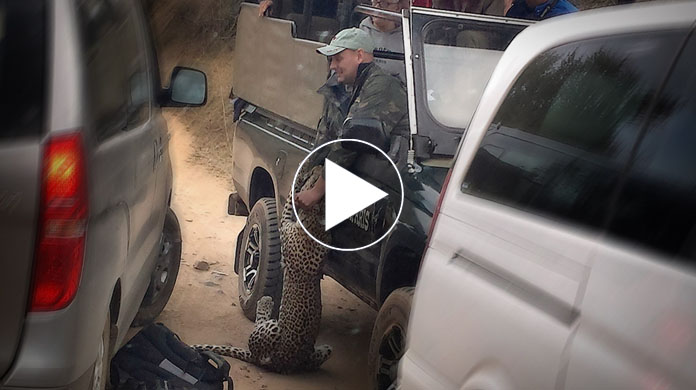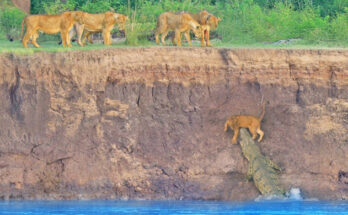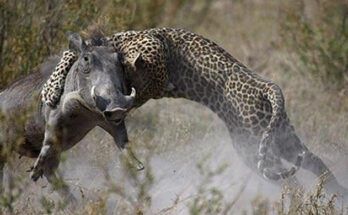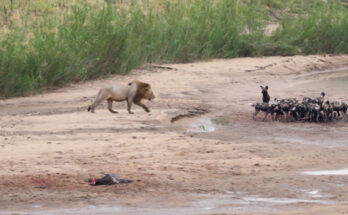The leopard that attacked Nhongo Safari Tours guide Curtis Plumb was not a crazy, but furious, predator, conservation expert Gerrie Camacho said.
Camacho, who survived a leopard attack in September 2012, told Lowvelder: “I watched the video, and I must say, one could see this animal wasn’t healthy. I would have left the scene immediately if I was there because it was very aggressive.”
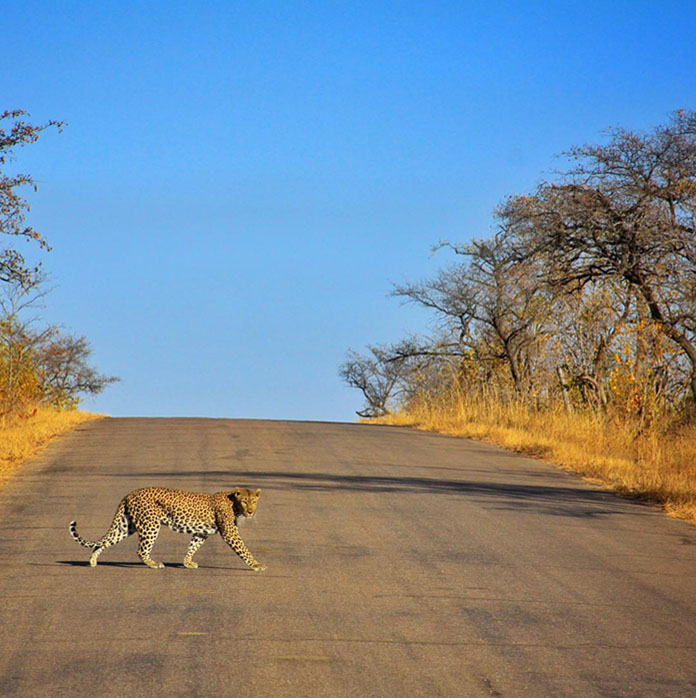
Camacho reiterated the attack on Plumb was not because the animal had been crazy but because it was angry.
“The leopard wasn’t ‘crazy’; you could see it was very, very angry. I personally think all the vehicles around it and the consequent noise added to its irritation levels. And you know what? If a predator decides to take some or other action, it will do its best to finish it.”
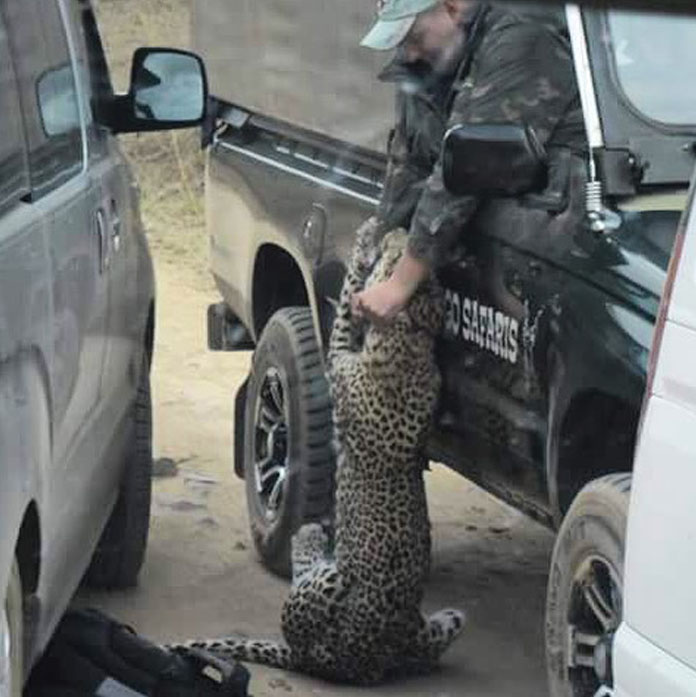
Plumb was attacked near Skukuza in the Kruger National Park (KNP) last Thursday. He had been driving an open safari vehicle (OSV) and stopped with a group of tourists at a leopard sighting when the animal attacked him. A video, showing the animal holding on to Plumb’s arm and Plumb reversing in an attempt to shake off the cat, is part of SANParks’ investigation.
Camacho said proof for this is that this leopard got up and walked away after two vehicles drove over its lower body. He confirmed it was standard procedure to treat any victim of a wild animal attack for possible rabies as well as other diseases. The state veterinarian in KNP, Louis van Schalkwyk, tested the leopard that had attacked Plumb for rabies, but the results are still outstanding.
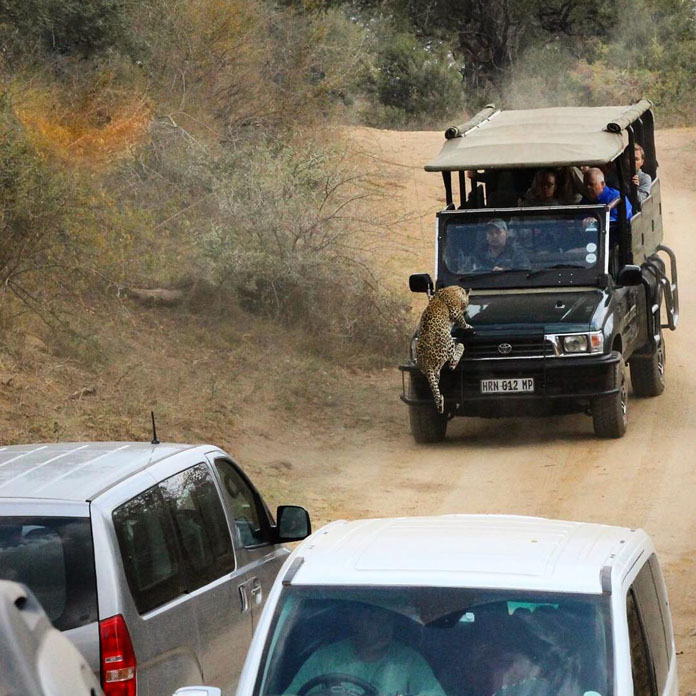
Markus Hofmeyr, head veterinarian of SANParks, confirmed the leopard suffered from bovine tuberculosis. Various game-ranging experts have voiced their opinions on social media.
Ian McDonald, lecturer in game ranging and wildlife management at Unigrad Lowveld, said: “I have always contended the belief that you should not stand up in a vehicle because it breaks the outline, as an animal will see the human form, as a load of rubbish.
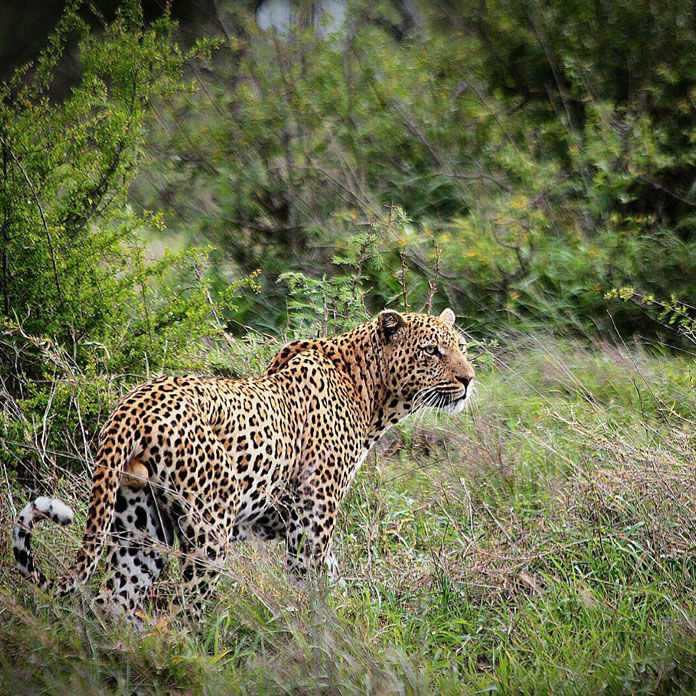
“When a lion, leopard, hyena, cheetah or wild dog walks past your vehicle, they look at you directly. They don’t look vaguely at the car; they make direct eye contact. They know you are there, and they see you.”
McDonald said they did not attack because the passenger was part of a bigger animal, the car, and the fact that it approached the animals told them you were not scared of them.
“When the guide reversed to get away from the leopard, and it chased after him, in my opinion, it interpreted that the vehicle and its occupants feared it and were ‘running away’, which gave him the confidence to chase in the hope of catching a meal.”
A second video has since surfaced, showing the same cat jumping up against another vehicle filled with tourists, about an hour before the attack on Plumb. McDonald said this proved that Plumb did not have to tease, box in, or irritate the animal to get the kind of reaction he had.
“My only criticism of this whole incident is the fact that guides actually wanted to show this leopard to their guests. If I heard over the two-way radios that there was a sick, thin, angry leopard, I would not even have bothered to make my way there.
“That is certainly not the way I would want my guests to remember it, but that is a subjective, personal decision. You cannot judge someone on that,” McDonald said.
Joep Stevens, general manager of strategic tourism services of SANParks in Pretoria, confirmed the gathering of eyewitness reports was going well. He urged visitors who had witnessed the event to come forward with information as the video did not portray the circumstances that led to it in the first place.
